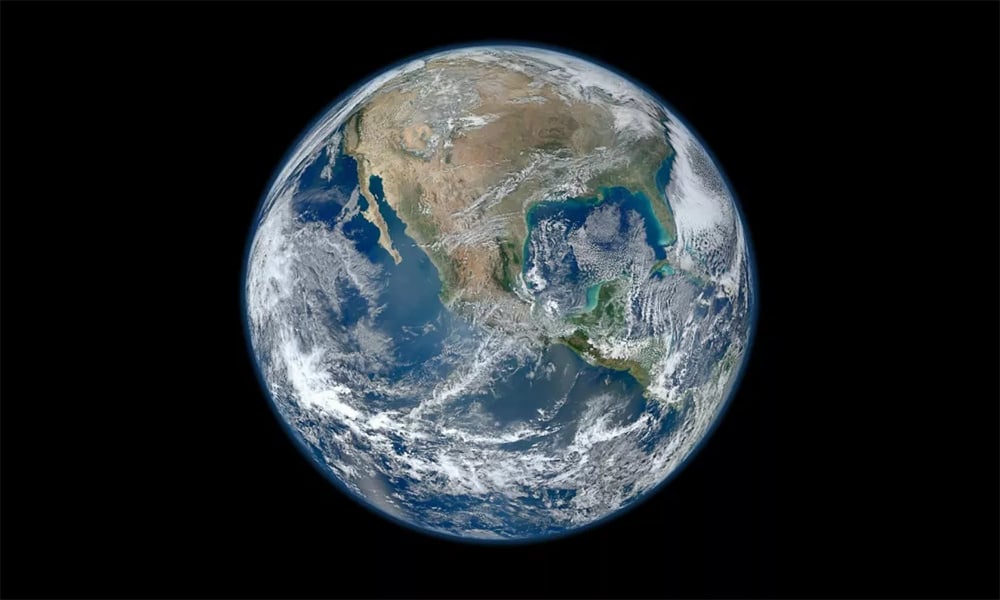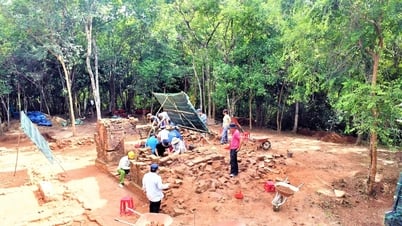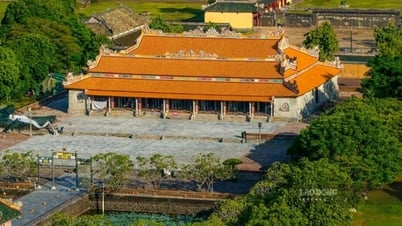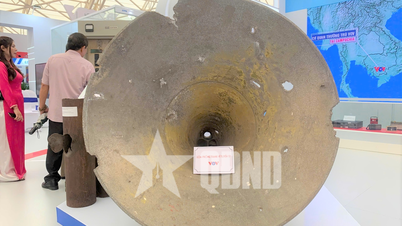Detailed image of Earth compiled from multiple images taken by the Suomi NPP satellite. Photo: NASA/JPL
Earth is about 4.54 billion years old. During that time, the planet has seen continents form and disappear, ice caps expand and shrink, and life evolve from single-celled organisms to giant blue whales. So how do scientists know the age of the Earth?
“When you’re an Earth scientist and you look at a rock, it’s not just a rock. That rock has a story that you can try to decipher,” said Becky Flowers, a geologist at the University of Colorado Boulder.
When minerals form from magma or lava, they often contain traces of radioactive materials, such as uranium. Over time, these radioactive elements decay, emitting radiation, eventually transforming into new, more stable elements that become trapped inside the mineral.
Take radioactive uranium-238, a common form of uranium, as an example. Its atoms will release energy until they turn into lead. This happens at a fixed rate called the half-life, which is the time it takes for half the atoms to decay.
The half-life of uranium-238 is over 4 billion years, meaning it takes over 4 billion years for half of the uranium-238 in a sample to turn into lead. This makes uranium-238 ideal for dating extremely ancient objects.
Using half-lives, scientists can calculate the age of rocks based on the ratio of the radioactive “parent” element to the stable “daughter” element. This method is called radiometric dating.
Zircon is often used for radioisotope dating because it contains a relatively large amount of uranium, Flowers said. Using uranium-lead is just one type of radioisotope dating. Others use other elements, such as carbon isotope dating. This is one of the most common methods, using a radioactive isotope of carbon that has a half-life of thousands of years and is useful for dating organic matter.
Using these methods, geologists have discovered that minerals on Earth are 4.4 billion years old, meaning that the blue planet has existed for at least that long. But why do they think that the Earth is more than 4.5 billion years old, more than 100 million years old?
The Earth has changed a lot over billions of years, especially through processes like plate tectonics, which cause the crust to shift, new land to form from magma, and old land to be pulled back into the ground. As a result, it is very difficult for scientists to find rocks from the early days of the planet. They have long since eroded or melted into raw material.
However, scientists can use radiocarbon dating to find out the age of rocks from elsewhere in the solar system. Some meteorites contain material that is more than 4.56 billion years old, and rocks from the Moon and Mars are also around 4.5 billion years old.
These dates are fairly close to when experts believe the solar system began to form from the cloud of gas and dust surrounding the infant Sun. Based on these relative ages, they can piece together a timeline of the formation of Earth, the Moon, Mars, and other nearby celestial bodies.
The transition from primordial dust cloud to planet Earth did not happen instantly, but over millions of years, according to Rebecca Fischer, an Earth and planetary scientist at Harvard University. This means that our understanding of the age of the Earth is not a specific year, but rather a period of time when the blue planet began to form.
Source VNE
Source link






![[Photo] President Luong Cuong receives Speaker of the New Zealand Parliament Gerry Brownlee](https://vphoto.vietnam.vn/thumb/1200x675/vietnam/resource/IMAGE/2025/8/29/7accfe1f5d85485da58b0a61d35dc10f)




















![[Photo] Hanoi is ready to serve the occasion of the 80th National Day Celebration on September 2nd](https://vphoto.vietnam.vn/thumb/1200x675/vietnam/resource/IMAGE/2025/8/29/c838ac82931a4ab9ba58119b5e2c5ffe)



































































Comment (0)